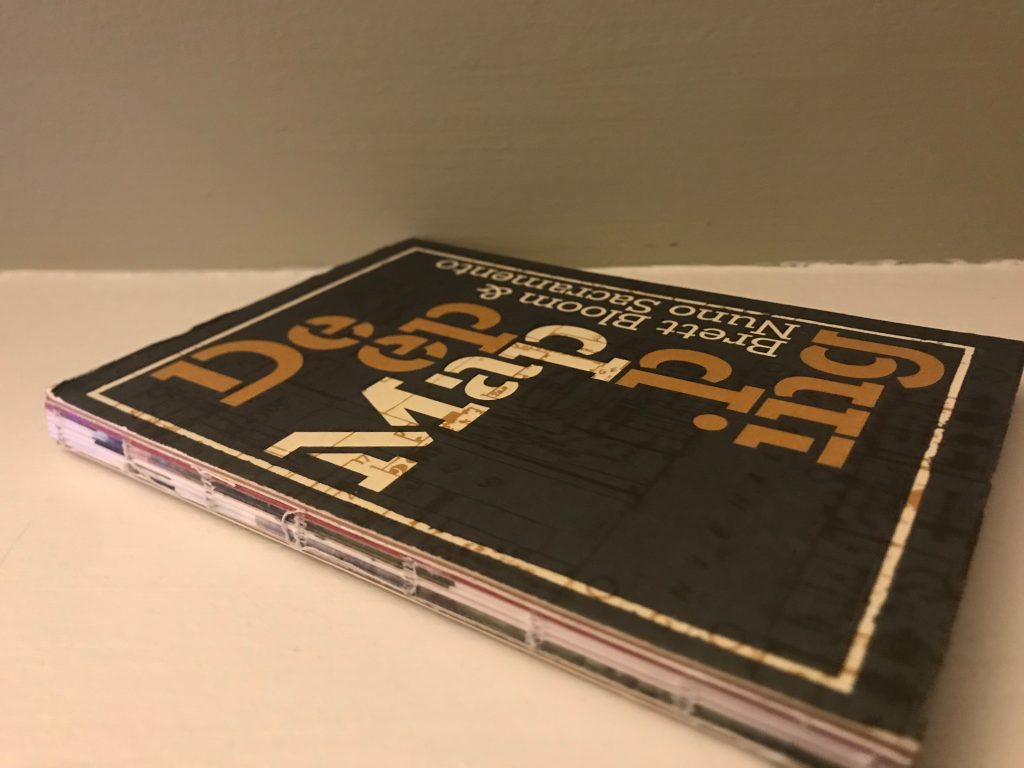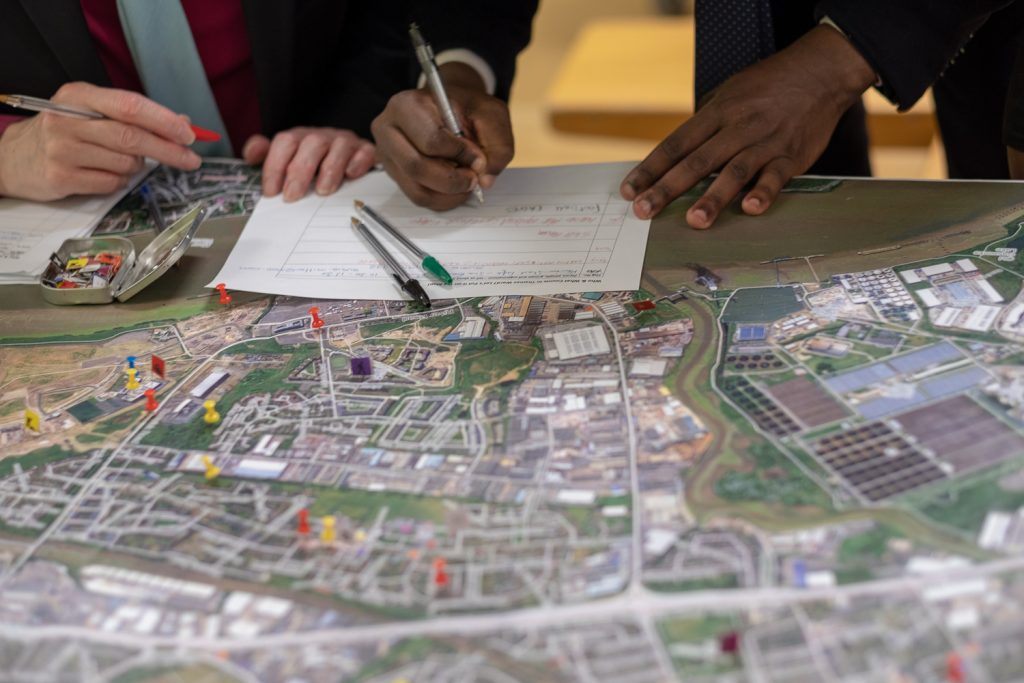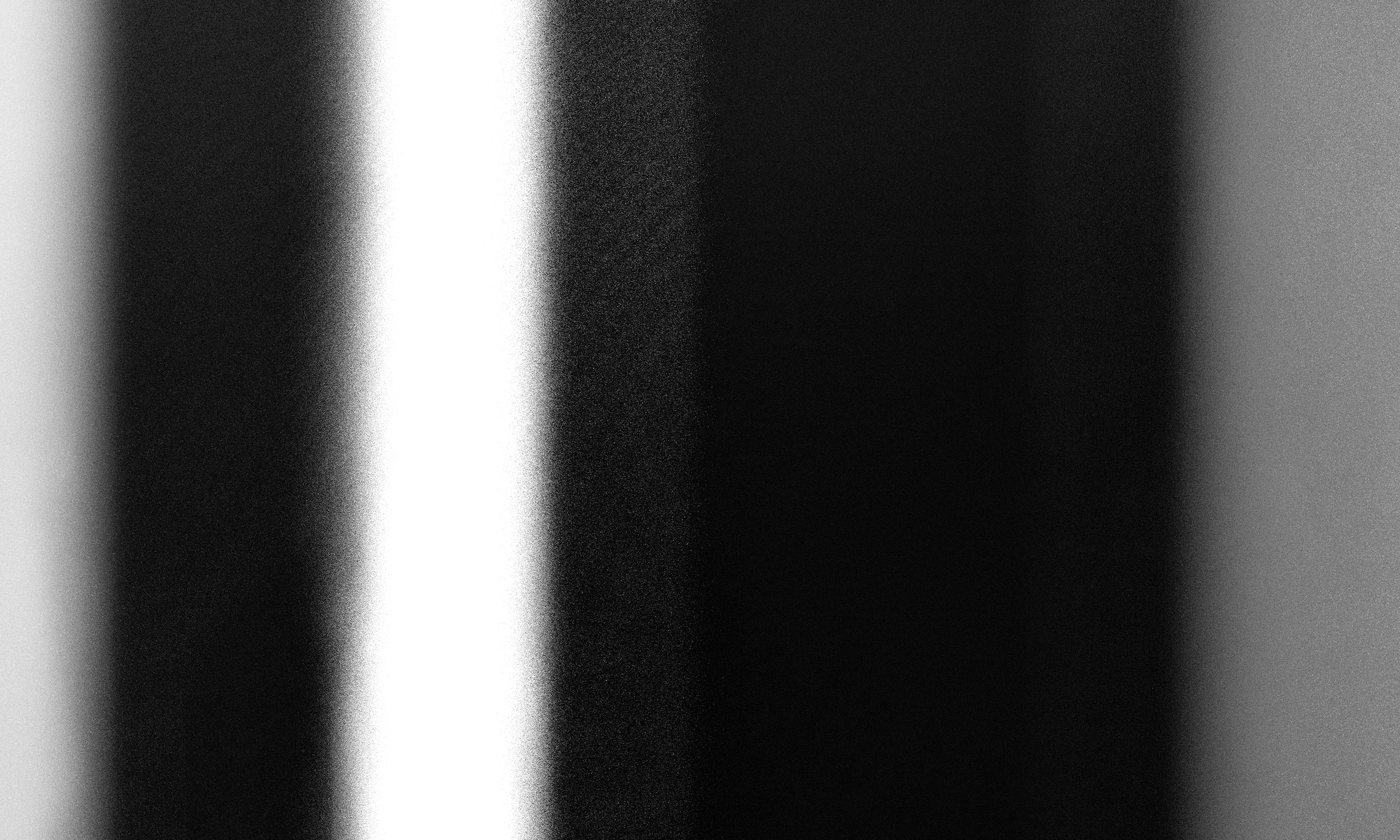
I came across this short book by chance at a bookbinding workshop. Bloom and Sacramento describe Deep Mapping as ‘a process of reading and reshaping the landscape that embraces political, social, economic, infrastructural and environmental concerns, challenging accepted knowledge and imposed belief systems’ (p.8). It involves focusing on a specific small area or place, and conducting archival research, seeking local accounts, and, most importantly, engaging directly with the landscape through travelling in and across the area, and paying attention to what lies below and above, and what is hidden or silenced. Deep Maps, they claim, ‘propose a perspective from below, which puts puts the ‘needs and desires’ of, for example, the earth, poor people, devastated landscapes, in a relationship where they are given equal or greater consideration than the narratives of a dominant culture’ (p.6). Inspiration for the approach is taken from William Least Heat-Moon’s (1991) PrairyErth, a detailed narrative exploration of a small area of Kansas which attempts to make visible that which is not readily seen, and to present narratives and insights that run counter to dominant (western/colonial) accounts and ways of knowing. Bloom and Sacramento liken this to production of a form of ‘thick description’ proposed by the anthropologist Clifford Geertz (1973) as a conduit for engaging with cultures and ways of living with which we are unaccustomed. In the development of their own approach to Deep Mapping, as an experiential artistic practice, Bloom and Sacramento also invoke the practice of Deep Listening advocated by the composer Pauline Oliveros (2005). Sacramento presents a method for Deep Mapping, comprising of nine components, from selection of a place through to compilation of outcomes (pp. 13-16). Bloom describes a number of ‘direct social and spatial encounters’ in which Deep Mapping has been applied as a methodology.
There are strong resonances between this approach and my own project (and my wider interests, for instance in minimalist music and sound art). My work engages with specific places and engages with entanglement of human activity and identity with the built and natural environment, and seeks to explore the impact of change in these settings from a range of perspectives (across generations, for instance), using a variety of media (text, narrative, maps, photographs, archives, artefacts etc) and at different levels (from the micro to the macro; see earlier activity using portable microscope and Google Earth images). Challenging the dominance of colonial ways of thinking about our relationship to the land and place problematises western notions of spacetime, and Bloom and Sacramento make an interesting reference to Shahjahan’s (2015) work on the decolonisation of time, the body and pedagogy, forming links with other aspects of my work (on access to higher education and Aboriginal and Torres Strait Islander communities). Taking a post-humanist, and new materialist, position, acts to further de-centre the human subject. The approach I am taking, and my range of interests, would seem to be consistent with Bloom’s description of Deep Mapping.
‘A Deep Map of a place includes many things: direct perceptions of that place; its inhabitants’ memories; embodied understandings as place enters you in numerous ways that are emotional, psychological, physical, spiritual, and transcendental; geological formations; more-than-human actors like animals, plants, microbes, and landscapes; historical developments from different eras; weather patterns; agricultural uses; modern infrastructure; bioregional processes; contradictory ideological ratiocinations; and more. A Deep Mapping of a place potentially has no limits to complexity as long as it is meaningful and you have-or a group has-the ability to hold an awareness of the varying ways of understanding. The layers can be added as long as this helps elucidate and makes present a complex way of relating’ (p.59).
There are other dimensions to my work (in working, for instance, with different forms of image making, creation of archives and the oscillation between analogue and digital media), but the idea of Deep Mapping is helpful in achieving coherence at a methodological level. Deep Mapping has been applied mainly in rural settings (Bloom notes the distinctly urban difficulties that have been encountered by group members in getting to workshops and engaging with the process in London, for instance); in working in urban communities with a concern for the manner in which the environment, community and sense of place is being transformed by regeneration, it is useful to think through how the Deep Mapping process can be adapted and applied, and how visual exploration can be given a prominent place in the process. On a practical level, also, Sacramento’s nine-step ‘Lumsden Method’, and example of a two-hour workshop starting from the analysis of maps of an area, are a useful resource for the design of my own workshops (and a timely reminder of Ward and Fyson’s,1973, writing on education beyond the classroom), as well as indicating some of the ways in which maps and mapping can be incorporated into my work.

References
Bloom, B. 2017. ‘Deep Maps’. In Bloom, B and Sacramento, N. 2017. Deep Mapping. Auburn, IN: Breakdown Break Down Press. 56-76.
Bloom, B and Sacramento, N. 2017. Deep Mapping. Auburn, IN: Breakdown Break Down Press. Online at https://www.breakdownbreakdown.net/wp-content/uploads/2018/02/2017-Deep-Mapping-bookweb.pdf [accessed 05.08.19]
Geertz, C. 1973. The Interpretation of Cultures. New York: Basic Books.
Heat-Moon, W.L. 1991. PrairyErth (A Deep Map). Boston: Houghton Mifflin Company.
Oliveros, P. 2005. Deep Listening: A Composer’s Sound Practice. Lincoln, NE: iUniverse.
Shahjahan, R. 2015. ‘Being “lazy” and slowing down: Toward decolonizing time, our body, and pedagogy’, Educational Philosophy and Theory, 47: 488–501.
Sacramento, N. 2017. ‘Deep maps and geographies from below’. In Bloom, B and Sacramento, N. 2017. Deep Mapping. Auburn, IN: Breakdown Break Down Press. 14-49.
Ward, C. and Fyson, A. 1973. Streetwork: The exploding school. London: RKP.
